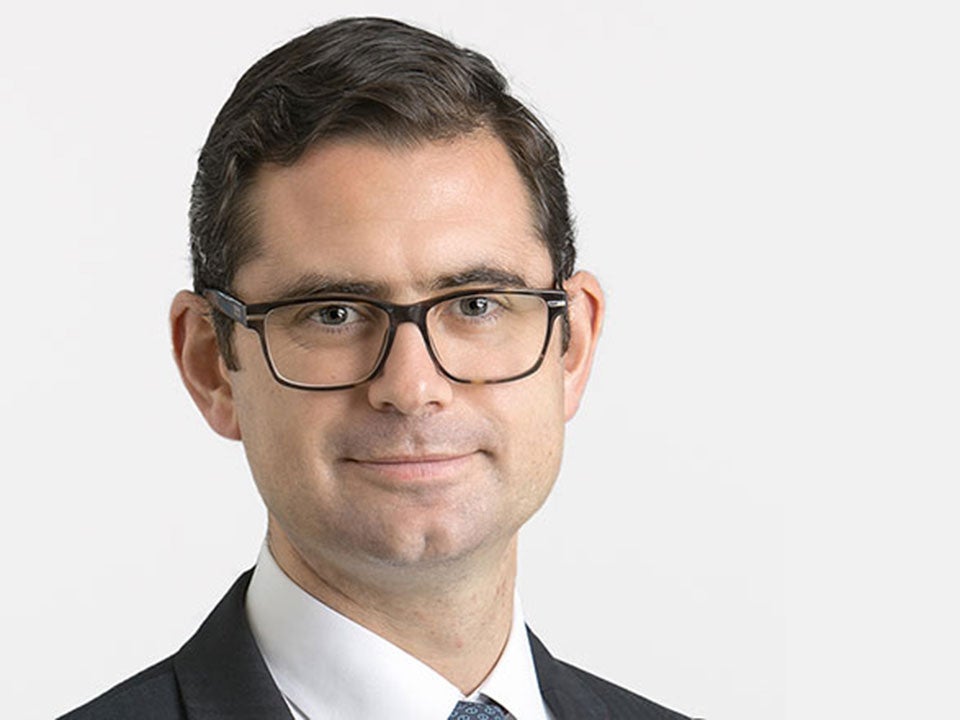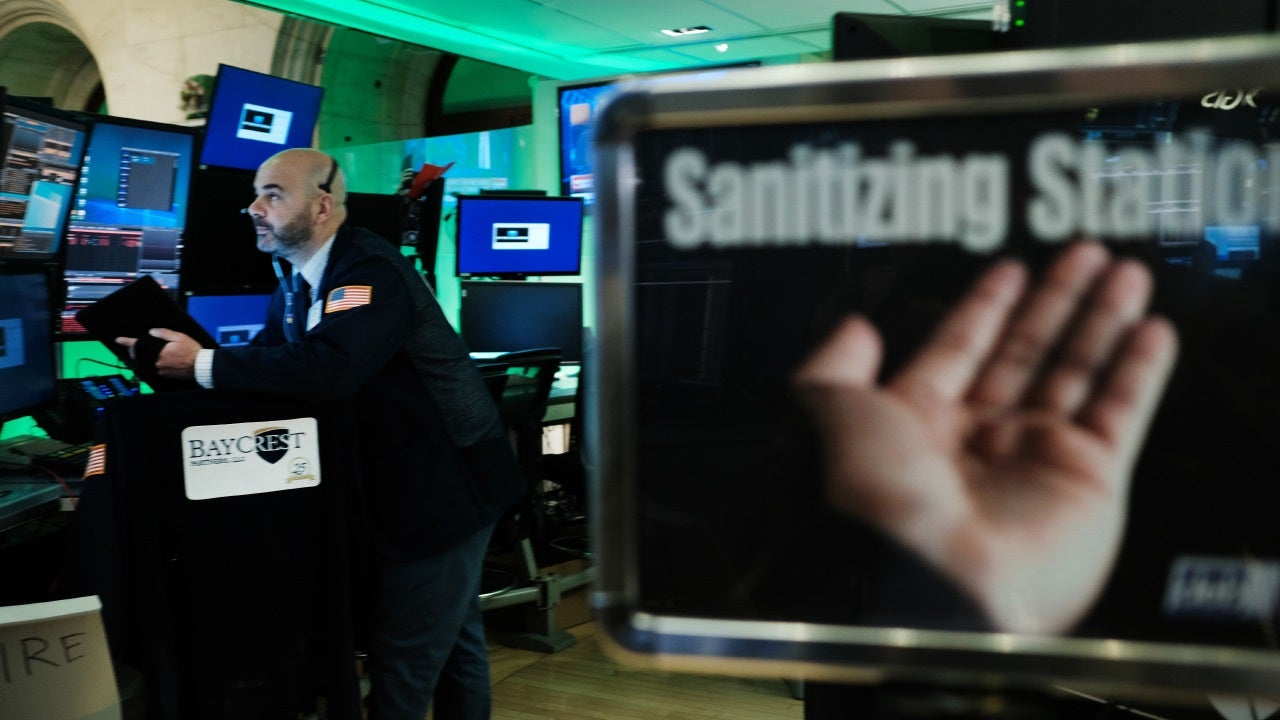With the US economy hitting a “stop” and social distancing impacting our lives, what are Invesco Fixed Income’s expectations for the second quarter of this turbulent year?
The US economy is currently experiencing a “sudden stop” in growth as efforts to combat the spread of the coronavirus increase, while social distancing will likely have a direct impact on workers and small businesses across the economy.
Invesco Fixed Income’s expectations currently are for the US and European economies to contract sharply in the second quarter this year, and this estimate is subject to further downward revision if the virus continues its aggressive spread.
This very sharp contraction is pressuring all players in the US economy and creating a funding need for corporations, small businesses, and households. It is vitally important that funding needs be met to ensure that the exogenous economic shock the US economy is experiencing does not migrate into a financial crisis, which would likely further pressure economic growth.
The US economy is dependent on banks and other financial market participants to help meet the economy’s funding needs in this current sudden stop environment. It is our belief that certain regulatory features are preventing banks from performing this role in the financial system.
In recent days, the US Federal Reserve (Fed) has introduced a number of programs to support markets, including some mortgage purchases, but this is not making its way into the broader economy in desired fashion. Fed balance sheet data published on Thursday (for March 18) showed a modest jump in discount window borrowing (USD28 billion) following the Fed’s expansion of the program the previous Sunday.
However, the overall balance sheet expanded by USD356 billion, mostly due to purchases of US Treasuries (USD117 billion) and repurchase agreements (USD200 billion). Even so, the most recent data on commercial bank lending (March 11) show only a weekly increase of USD54.8 billion, illustrating the point that Fed balance sheet expansion is not yet flowing through to the economy.
A properly functioning credit market is vitally important to households and small businesses and the US economy as it negotiates the sudden stop related to the coronavirus. Unfortunately, significant strains have developed in the US financial system. This is increasing the chances of a financial crisis on top of the health and economic crisis and is exacerbating the impact of the crisis on financial markets and ultimately on the real economy.
Regulatory hurdles stand in the way of credit creation
Many different factors have converged to deepen the current economic and financial crisis triggered by the spread of COVID-19. They include the new set of banking system regulations and the development of large, leveraged positions among financial institutions outside the regulated banking system, all exacerbated by the sudden fall in energy prices.
Prior to the outbreak of the coronavirus pandemic, monetary conditions - particularly in the US - were very favourable, generally supporting moderate economic growth with low inflation, while also encouraging risk-taking during the past five years. As Fed chairman Jay Powell said several times in January and February, the US economy was “in a good place”.
However, there have also been some key regulatory, structural, and policy changes going on in the background that have played a critical role.
First, along with the US Dodd-Frank legislation, the Basel III financial sector regulatory accord was implemented in phases from 2013 onwards. This has required banks to a) maintain much more capital - a minimum of 4.5% of risk-weighted assets plus a capital conservation buffer of 2.5%, plus a variable counter-cyclical buffer of up to 2.5%, b) observe a leverage ratio (Tier 1 capital/total consolidated assets) in excess of 3%, and c) hold much more liquidity in the form of high quality liquid assets (HQLA) to cover total net liquidity outflows over 30 days (known as the liquidity coverage ratio or LCR).
The banks, in short, were made much safer, but at the cost of having their balance sheets tied up meeting regulatory ratios. The result has been that when a credit crunch has arisen, they have been unable to deploy all that capital and liquidity.
In addition, banks have been compelled by the Volcker rule under Dodd-Frank to retreat considerably from the trading and market-making activities they conducted before the global financial crisis, and therefore have not been able to act as shock absorbers in the current crisis. This is a significant reason why the US Treasury market and other fixed income markets have become much less liquid.
Second, the Trump administration tax cuts at the end of 2017 caused a surge in the fiscal deficit to USD1 trillion in 2019. At the same time, the Fed’s rate hikes between 2015 and 2018 caused the US Treasury yield curve to flatten. As it flattened, the dollar hedging cost for foreign buyers of US Treasury securities increased, diminishing the attractiveness of these securities to foreign investors.
Third, in response, the US Treasury embarked on a major shift in funding strategy, raising 80% of gross funds in short-term securities with six months or less of maturity during the fiscal year 2018-19.
Fourth, as part of its monetary policy normalization process between October 2017 and August 2019, the Fed was allowing securities in its balance sheet to mature and did not replace them (this is sometimes called QT, or quantitative tightening). This had a major impact on bank balance sheets, reducing reserves, which were part of their HQLA, by USD600 billion. To replace the reserves they were losing, banks purchased short-term US Treasuries and mortgage-backed securities to top up their levels of HQLA.
For banks, purchasing securities is similar to making a loan. In the case of a loan, the borrower’s deposit account is credited; in the case of security purchases, the deposit account of the seller is credited. Both actions increase deposits, and hence the money supply. Despite the fact that loans did not accelerate from their 4% p.a. growth rate, and the Fed did not cut rates until July 2019, the rate of growth of money (M2) doubled from 4% to 8% p.a. during 2019, giving a huge push to the stock market. The banks, in other words, were financing the federal deficit by creating money.
Fifth, in the background, although the banks were being made safer during the decade 2009-2019, hedge funds and private equity investors were taking on more risk – leveraging up. They, along with other investors, were doing carry-trades on a large scale. In essence, they were taking advantage of low interest costs in key currencies to invest in higher-return securities – often of lower quality – sometimes in foreign currencies.
Reducing regulatory burdens and broadening credit could help Fed achieve goals
Much of the financial regulation after the global financial crisis was designed to ensure that we did not experience another crisis brought on by the banking system. Arguably, this regulation has worked well. Today, we have a banking system with capital and liquidity safeguards that are critical to the financial system. Unfortunately, in our view, some of these safeguards have reduced the financial system’s flexibility to cushion credit needs and provide market intermediation when confronting an exogenous economic shock like the one we are experiencing today.
The Fed has been responsive in utilizing the tools at its disposal to counteract the tightening in the financial system and provide stability to the markets. Unfortunately, the traditional tools that the Fed has in its arsenal reach either banks via the discount window, or primary broker dealers via open market operations. Under normal circumstances, the Fed can achieve its goals by transacting with those two sets of counterparties. However, recently, banks and primary broker dealers have not been able to efficiently transmit credit intervention for the Fed, in our view.
Given the new regulatory regime put in place following the global financial crisis, banks and broker dealers must manage their balance sheets more conservatively and cannot effectively perform their role as intermediaries in markets. This is one of the reasons the Fed has had to expand its balance sheet so much every time there is a crisis, in effect acting as a dealer of last resort. In order to get liquidity into the hands that need it, the Fed will likely have to either reduce dealers’ regulatory burden or transact directly or indirectly with non-traditional counterparties.
We believe reducing the regulatory burden or implementing funding facilities for the broader credit sectors would help significantly with opening up access to credit. Easing access to facilities such as the Primary Dealer Credit Facility by making the facility non-recourse, or exempting borrowing from the facility from the LCR and other regulatory requirements, would provide significant relief to credit markets and bolster overall financial market liquidity, in our view.
The proper functioning of markets is essential. Unless liquidity improves in these markets, we run the real risk of creating a financial crisis on top of a fundamental economic crisis. This would likely amplify the negative outcomes associated with the coronavirus fight and lead to much worse outcomes for hardworking Americans.






